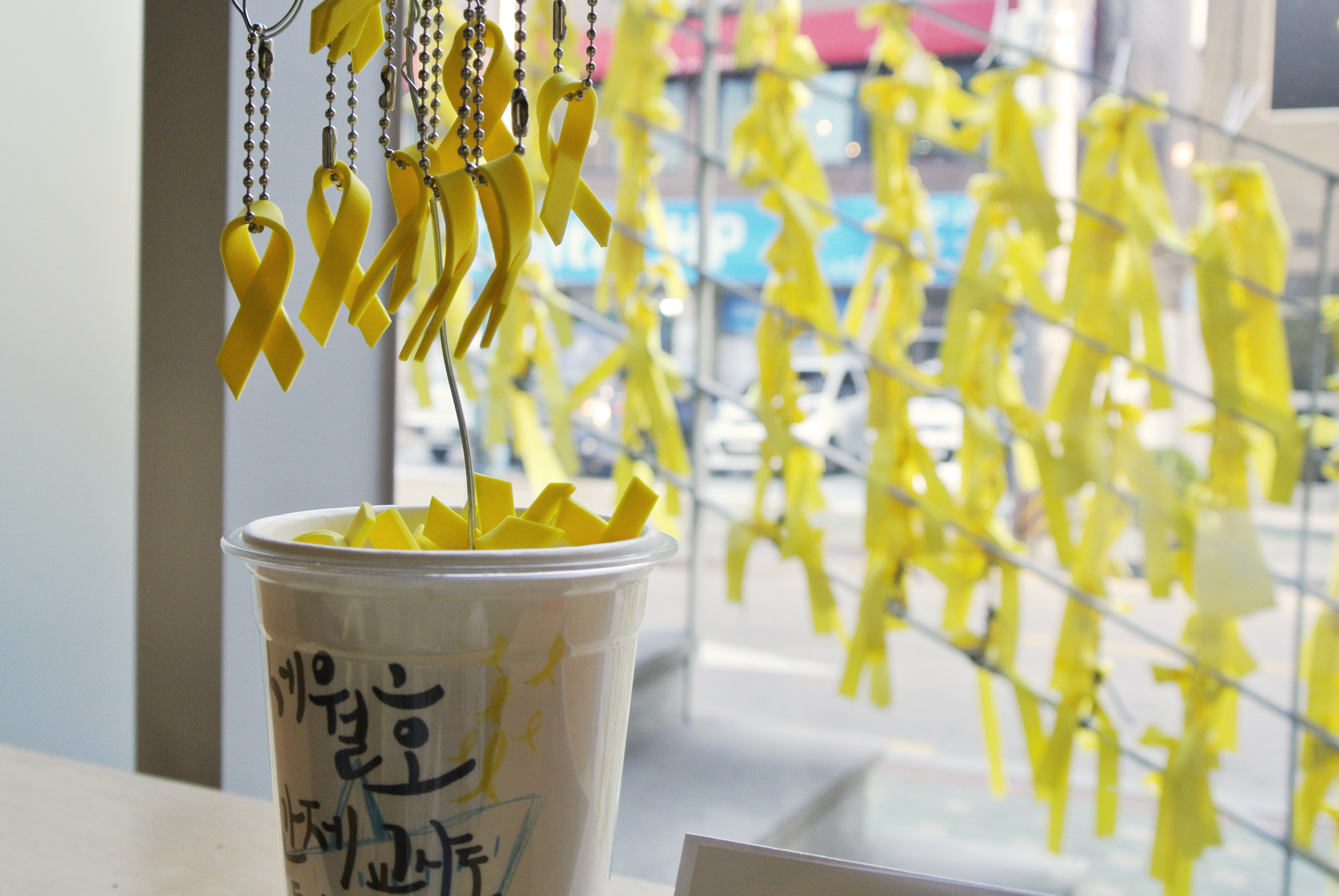Yellow ribbon is the symbol of the Sewol incident, a ferry disaster that killed 304 passengers three years ago today. All over South Korea, tiny yellow ribbons dangle from people’s backpacks, wallets, bicycles, and on the windowsills of small cafés. Politicians — mostly from the liberal factions — don the yellow ribbons to show their solidarity.


